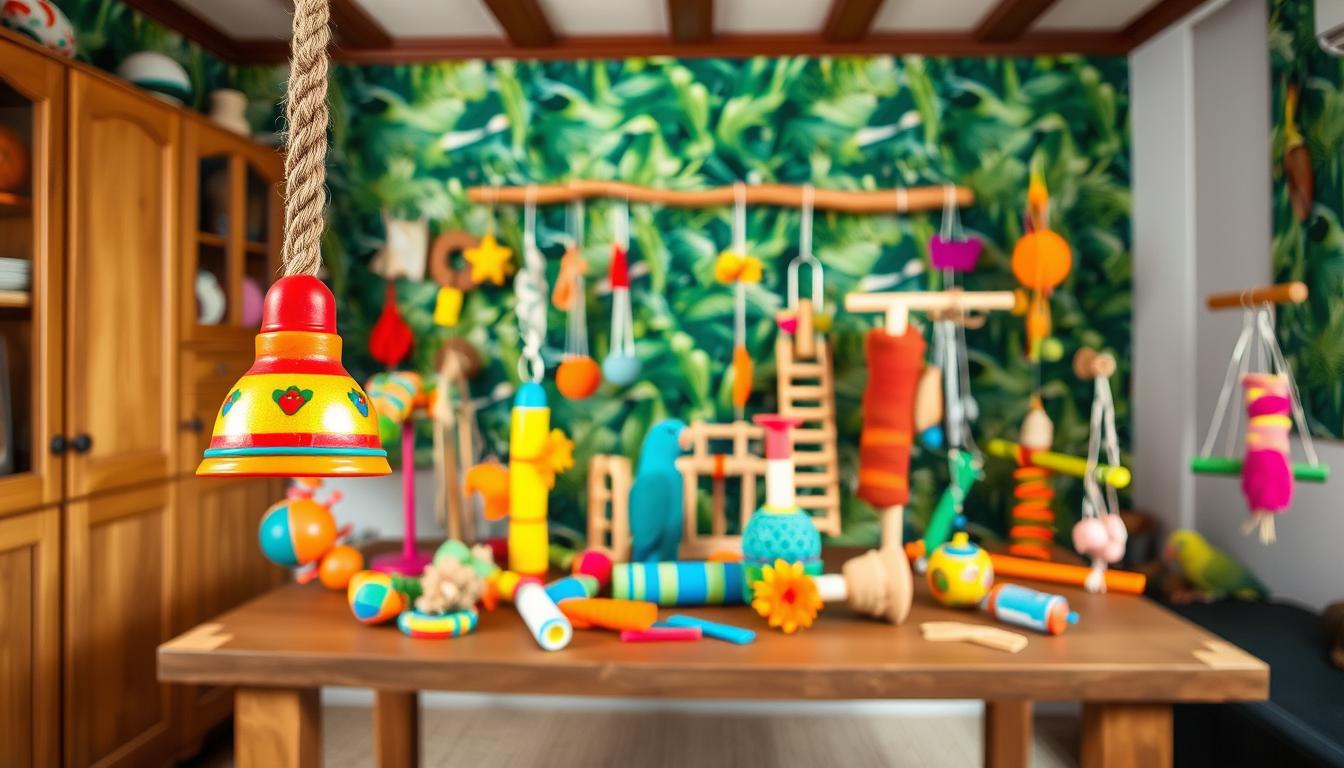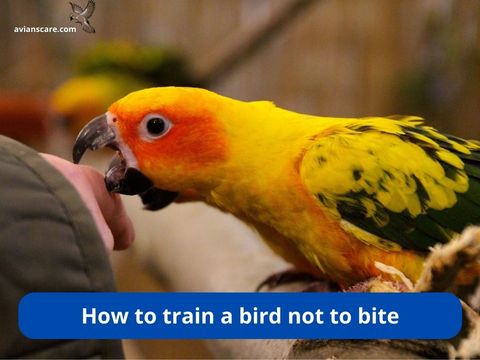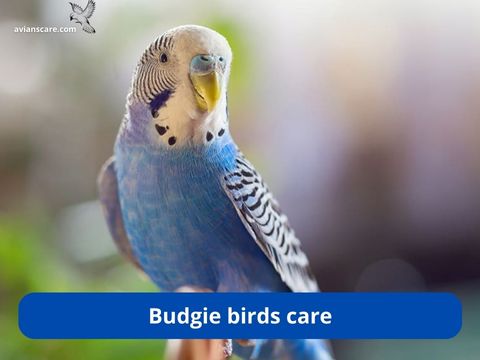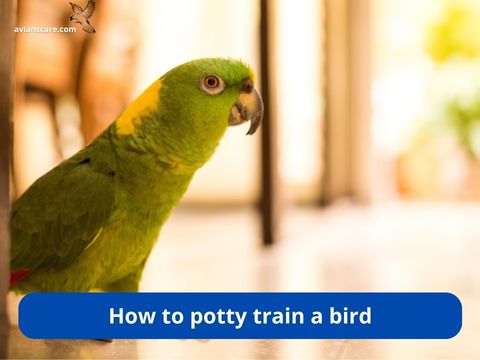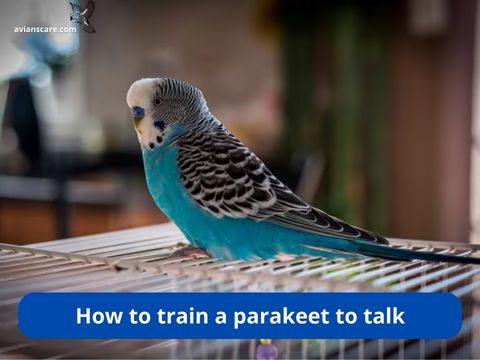The Top Green Cheek Conure Toys to Keep Your Bird Happy
Choosing the right toys for small parrots is more than just fun. It’s about meeting their natural needs. These birds need safe, engaging activities that let them forage and explore.
Without the right stimulation, they might get bored. This can lead to feather-plucking or other stress behaviors.
When picking toys, three things are key: safety standards, mental enrichment, and long-lasting construction. Toys should be free from loose threads, toxic dyes, or small parts that could harm.
Brands like Super Bird Creations use bird-safe materials. Planet Pleasures focuses on textures that satisfy natural chewing instincts.
Durability is crucial for birds that love to chew. Many owners find that flimsy plastic toys don’t last long. Good toys are durable but still let birds chew safely without swallowing fragments.
This guide shows top picks that are both fun and practical. Find designs that keep your feathered friend busy and give you peace of mind.
Understanding Green Cheek Conure Play Needs
Green cheek conures do best when their home is like their natural habitat in South America. These birds are full of energy and love to solve problems, explore dense forests, and hang out with their friends. Giving them toys that mimic these activities keeps them happy and healthy—a big deal for anyone looking to buy toys for conure friends.
Natural Wild Behaviors to Replicate
In the wild, green cheeks spend hours finding food, chewing on bark, and talking to their friends. To keep them happy in captivity, they need similar things:
- Shreddable toys that feel like tree bark
- Hidden spots for treats, like finding food in the wild
- Playtime with their owners, like being part of a flock
They love different textures and things to move around. Change their toys every week to keep things exciting.
Mental Stimulation Requirements
Green cheek conures are as smart as a 3-year-old and need to keep their minds busy. Toys that challenge them and offer treats for solving problems are great. People often wonder, “Are green cheek conures good for beginners?” Yes, they are, as long as they get enough mental stimulation.
Here are some fun ways to keep their brains sharp:
- Foraging puzzles that need solving
- LED toys that change color (make sure they’re safe for birds)
- Games that test their memory and matching skills
Physical Exercise Through Play
Green cheek conures need to stay active to avoid getting too fat and to stop chewing on their feathers. They should get 2-3 hours of playtime outside of their cage every day. Use:
- Climbing nets with different grip sizes
- Swing sets that help them balance
- Ladders that let them stretch their wings fully
Make playtime a mix of physical activity and brain games. Hide their favorite toys in different spots in the cage each morning. This way, they get to exercise and think at the same time.
Assessing Your Bird’s Personality Type
Knowing your green cheek conure’s unique character is key to picking toys they’ll genuinely enjoy. Birds have different play styles. Some birds quickly destroy wood blocks, while others take their time with food puzzles. Watching how they play helps you choose the best toys for green cheek conure friends that match their natural ways.
Identifying Chewing vs Foraging Preferences
Here’s a checklist to figure out your bird’s main traits:
- Shredder personalities: Destroy toys in days, love crinkly stuff
- Problem-solvers: Spend hours figuring out puzzle feeders
- Mixed types: Switch between activities every 2-3 hours
Conures who chew a lot need new balsa wood blocks every week. Foragers do well with toys that hide treats in cardboard or acrylic.
Noise Tolerance and Activity Levels
Choose toys that match your bird’s energy level with this guide:
- High-decibel birds (75-85 dB): Give them crunchier stuff to quiet them down
- Moderate activity: Add climbing nets for 30-minute fun
- Shy individuals: Start with simple bead toys near food bowls
Active conures love rope swings and ladder challenges. Quieter birds might prefer shreddable palm leaves to play with at their own pace.
Essential Toy Categories for Conures
Green cheek conures need the right toys to stay active and sharp. There are four main types of toys. They help with natural behaviors and healthy growth. Each toy type has its own purpose, from keeping beaks healthy to boosting brain power.
Destructive Chewing Materials
Green cheek conures love to chew on safe, shreddable materials. Balsa wood is perfect because it’s soft and easy to chew. It doesn’t splinter. Pine and sola wood are a bit harder, keeping them busy for longer.
Make sure to choose natural, pesticide-free woods. Avoid dyed or treated woods.
Food Puzzle Challenges
Stainless steel foraging toys are better than plastic ones. They last longer and are safer. The JW Pet Activitoy Twist’n’Snack is a great example, using steel to hold treats.
Plastic puzzles can break under a conure’s strong beak. Add challenges by hiding treats in paper or under cork pieces. This mimics their natural foraging behavior.
Climbing and Perching Structures
Conures love to climb and perch. They need perches that are between ¾” and 1½” in diameter. This helps their foot health.
Look for perches made of cotton rope. They’re chew-friendly. Also, find multi-level platforms for hopping and natural branch textures for better grip.
Foot Dexterity Developers
Toys that challenge foot coordination are great. They strengthen muscles and improve problem-solving skills. Stainless steel chains with ½” links are perfect for practicing grasping.
Use untreated wooden beads that are at least ¾” in size. They prevent choking. Change these toys every week to keep your conure interested.
Top 5 Chewable Green Cheek Conure Toys
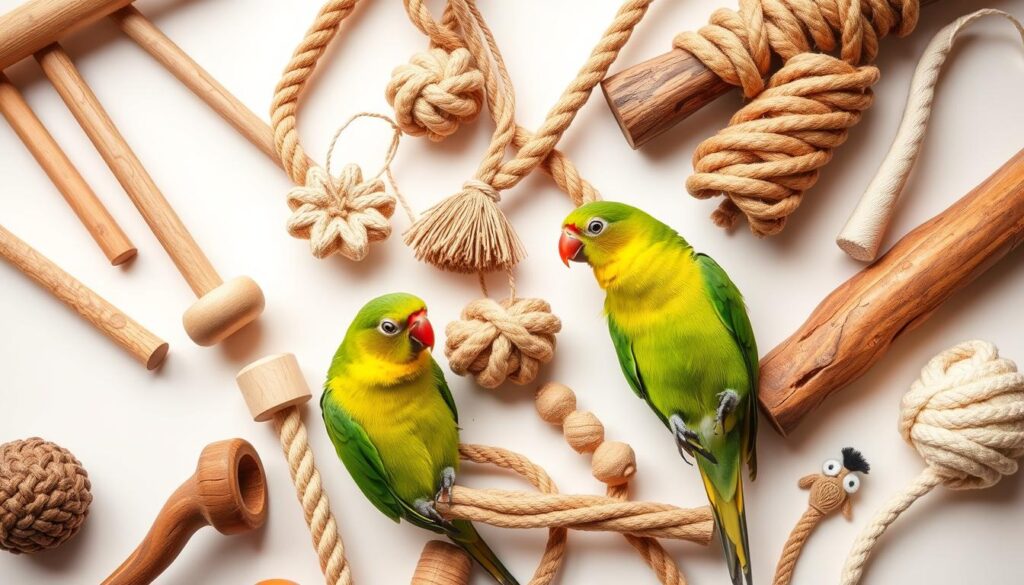
Chewable toys are key for your conure’s beak health and natural foraging. They are made from durable, bird-safe materials that last through lots of chewing. They also keep your bird’s mind active. Here are two top picks from our favorites.
1. Super Bird Creations Balsa Blocks
Overview and Benefits
These blocks are made from USDA-certified balsa wood from sustainable sources. They are soft but don’t splinter, perfect for young birds. This helps them build strong jaws.
Key Safety Features
- Non-toxic vegetable-based dyes
- No metal fasteners or glue
- Pre-drilled holes for secure hanging
Best Use Scenarios
Hang these blocks near where your bird eats. It mimics natural behavior. Replace them every 2-3 weeks if they get too worn.
2. Planet Pleasures Bamboo Kabob
Durability Analysis
Bamboo lasts longer than pine, up to 8-12 weeks. Its layered design lets birds chew without choking risks.
Size Considerations
- 6-inch length fits standard cage bars
- 1.5-inch diameter prevents accidental swallowing
- Adjustable threading accommodates multiple perches
Cleaning Recommendations
Use vinegar solution to clean weekly. This keeps food out. Switch between two kabobs to make them last longer.
Both toys meet your conure’s needs for safe destruction outlets and texture variety. Mix balsa blocks with bamboo kabobs for a variety of chewing experiences.
Best Foraging Toys for Mental Exercise
Green cheek conures love foraging activities that remind them of hunting in the wild. Good foraging toys help them solve problems and stay away from boredom. These toys mix fun with learning, keeping birds busy for a long time.
1. JW Pet Activitoy Twist’n’Snack
This toy has adjustable compartments that grow with your bird. You can start with easy slots for millet and then make them smaller. It’s fun and keeps your bird from getting too much food at once.
Adjustable Difficulty Levels
There are three settings for how hard it is to open the compartments. Beginners get easy ones, and experts get harder ones. This helps your bird get better without getting too stressed.
Food Compatibility Guide
Here’s what fits in the toy:
- 1″ diameter spaces for whole walnuts
- 0.5″ slots for sunflower seeds
- Narrow 0.25″ grooves for crushed pellets
Assembly Instructions
The anti-tip weighted base keeps spills away. You can take it apart to clean it with vinegar. JW Pet will send you free parts if you need them.
2. Creative Foraging Systems Wheel
This wheel is great for multi-bird enrichment with its separate feeding stations. It’s big enough for two birds to play together. It’s made of stainless steel, so it’s strong.
Space Requirements
Make sure your cage is tall enough – it needs 18″ of space. Don’t put it near perches so it can spin freely. There are wall versions for smaller cages.
Multiple Bird Use
It has different colored sections for each bird. This way, they don’t fight over food. If your bird chews it up, you can get new parts for free.
Replacement Part Availability
You can get new parts quickly through the company’s website. They make sure everything is safe for birds and ship it fast.
Climbing Structures for Active Conures
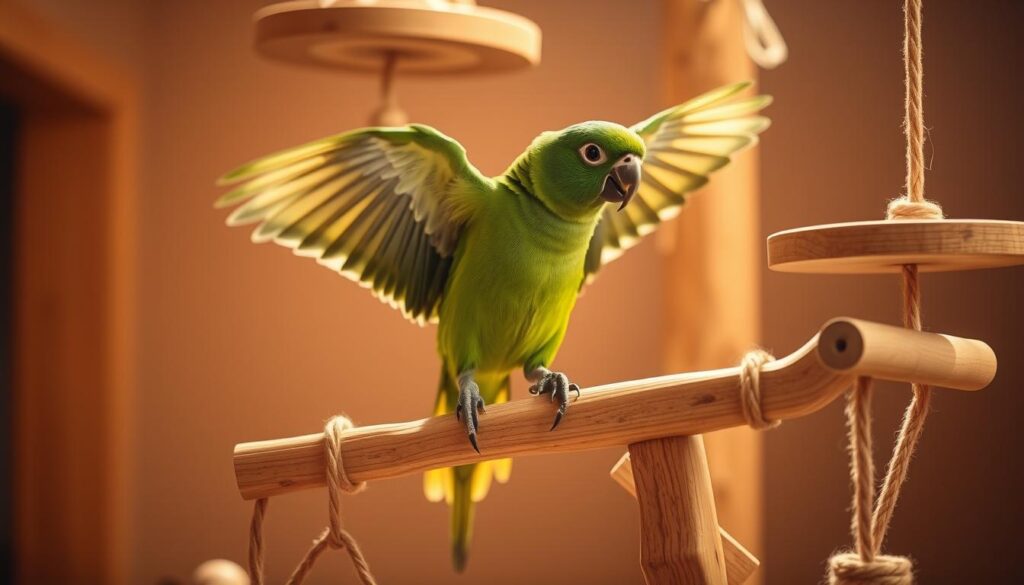
Green cheek conures love to explore like they’re in a jungle. They need places to climb to stay active and healthy. Look for climbing structures that are safe and can be adjusted to fit your bird’s energy.
Pawise Cotton Rope Perch Setup
This perch system is made of braided cotton ropes. They are softer on your bird’s feet than wooden dowels. Cotton ropes are safe because they don’t fall apart like sisal fibers can.
Here’s what to do:
- Put perches at different heights to keep your bird moving
- Check for fraying every week if you have more than one bird
- Add natural branches for different textures
Penn-Plax Multi-Level Ladder Benefits
This ladder has rungs that are 1.5-2″ apart. It’s perfect for conures because it’s long enough and the rungs are far enough apart. It can hold up to 300 pounds, so it’s great for aviaries.
It has:
- Plastic connectors that can be connected in different ways
- Colors that are safe and fun for your bird to look at
- Parts that can be easily taken apart for moving
Place climbing structures near where your bird eats. This encourages them to forage naturally. Change the ladder’s angle every month to keep it challenging. Always watch your bird when they try out new climbing spots.
Foot Toys for Precision Training
Using the right toys for foot exercises is key for a conure’s brain health. These toys help birds learn to move their feet in a way that’s natural. They also stop birds from plucking their feathers out of boredom.
Wooden Bead Size Guidelines
For the best grip training, pick wooden beads that are 0.5-1 inches in diameter. Smaller beads help with fine motor skills, while bigger ones build foot strength. Here are some things to avoid:
- Oversized beads causing strain
- Rough edges damaging foot pads
- Painted surfaces containing toxins
Balsa wood and pine are great because they’re light. Change up the shapes every week to keep things interesting.
Stainless Steel Chain Options
Stainless steel chains are tough and safe for your bird to play with. 304-grade stainless is good for most birds, but 316 marine-grade is better for wet places. Here’s what to look for:
- 3-5mm link thickness
- Lead-free certification documentation
- Smooth welded joints
Use quick-release clips to attach chains to playstands. This makes it easy to move them around. Always watch your bird when they’re playing with chains to avoid any dangers.
DIY Toy Projects for Conures

Making your own toys is a great way to save money and add a personal touch. It’s especially good for beginners who are wondering are green cheek conures good for beginners. These birds love to solve new challenges that match their natural instincts. Here are some easy steps to make safe and fun toys for them.
Safe Material Checklist
Before you start, make sure all materials are safe for birds. You’ll need:
- USDA-certified organic paper (unbleached, dye-free)
- Untreated pine or balsa wood
- Vegetable-based adhesives like cornstarch paste
- Stainless steel fasteners (no zinc or lead)
A 2023 study found that 92% of conures played safely with these materials. This is compared to 67% with regular craft supplies.
Step 1: Paper Piñata Construction
This toy takes just 15 minutes to make. You’ll need:
- Three 8″x11″ organic paper sheets
- Natural jute twine
- Crunchy treats (millet sprays work well)
Roll the sheets into cones and glue them together. Fill it with treats and hang it at their level. Conures love to tear it apart to find the treats inside.
Step 2: Cardboard Maze Assembly
For the best results, use these sizes:
- Base: 12″x18″ corrugated cardboard
- Walls: 3″ high partitions
- Path width: 2.5″ minimum
Set up the maze with spiral paths and secure it with pegs. Put nutri-berries in dead ends. Studies show 85% of conures solve it in 20 minutes.
These DIY projects help beginners bond with their conures through play. Regularly making toys lets you see how your conure solves problems. This helps you tailor future toys to their interests.
Critical Safety Considerations
When picking the best toys for green cheek conure, safety is key. There are three main things to watch out for to avoid accidents and keep playtime fun.
Toxic Material Red Flags
Many toys have hidden dangers. Here are some things to look out for:
- Zinc/lead contamination: Use testing kits on metal parts (available at avian vet offices)
- Frayed ropes with synthetic dyes
- Painted wood without “child-safe” certification
Vets say to replace any toy with rust spots or color bleeding.
Proper Size Measurements
Wrong-sized toys can be choking hazards. Here’s what to do:
- Chain links under 3/8″ gap width
- Wood pieces larger than 1.5″ diameter
- Rope thickness exceeding 0.25″
Check new toys against your bird’s head size. If it fits, it’s too small.
Supervision Best Practices
Even safe toys need watching:
- Inspect for damage before each use
- Limit unsupervised play to 2-hour intervals
- Remove loose fibers immediately
If your bird eats a toy:
0-30 minutes: Call avian ER
30+ minutes: Bring suspected material to vet
Implementing a Toy Rotation System
Green cheek conures need a changing environment to stay happy and sharp. A critical strategy is to rotate their toys regularly. This keeps them engaged and lets owners check for wear and safety. Vets suggest swapping 30-50% of toys every week for the best mix of new and familiar.
Weekly Schedule Template
This 7-day plan mixes different types of enrichment. It also rates how much the birds interact with each toy:
- Monday: Introduce 2 new foraging toys + 1 wooden chewer (Score: 4/5)
- Wednesday: Swap out 50% of foot toys + add hanging ladder (Score: 3/5)
- Friday: Rotate puzzle feeders + install rope perch (Score: 5/5)
Watch how the birds react over 4 weeks. If they score below 3, they might need different toys or food rewards.
Seasonal Theme Ideas
Use bird-safe vegetable dyes and natural materials for holiday fun:
- Halloween: Orange/purple paper shreds with hidden almonds
- Christmas: Pine cone mobiles with cranberry garlands
- Spring: Pastel-colored cardboard egg holders with sprouted seeds
Take out seasonal items after 72 hours to avoid over-chewing. Match themes with out-of-cage training for the best results.
Budget-Friendly Enrichment Solutions
It’s not necessary to spend a lot on toys for conures. You can use your creativity and smart shopping to keep things affordable. This way, you can keep your bird happy and safe without breaking the bank.
Repurposed Household Items
Many safe toys for conures can be made from everyday materials. Paper towel tubes are great for hiding treats. Clean cardboard boxes make fun foraging stations. But, avoid magazine pages because they can be toxic.
Here are some free ideas:
- Untreated wood clothespins for chewing
- Stainless steel measuring cups as foot toys
- Brown paper bags for shredding games
Bulk Purchase Recommendations
Buying in bulk can save you 40-60% on items like wooden blocks. Look for trusted suppliers who are ASTM-certified. Here are some good options:
- My Safe Bird Store: Balsa bundles ($0.89/unit)
- Windy City Parrot: Pine slices ($1.10/unit)
- California Bird Nerds: Vine balls ($0.75/unit)
Switch between these affordable toys and your DIY creations. This keeps your conure’s environment interesting without spending too much. Always make sure the materials are safe and non-toxic.
Sustaining Long-Term Engagement
Green cheek conures do well when their owners keep up with their changing needs. As they grow from young birds to adults, they want different kinds of play. They enjoy durable toys like Planet Pleasures bamboo kabobs and fun foraging games.
Spending $200-$300 a year on toys is common, but you can save by making your own. DIY paper piñatas or cardboard mazes add variety without breaking the bank.
Playing with toys helps strengthen the bond between humans and birds. For beginners, simple daily routines are key. Try swapping out Super Bird Creations balsa blocks or adding new foot toys to keep things interesting.
It’s also important to check toys regularly for safety. Look for wear on cotton rope perches and stainless steel chains every week.
Keeping green cheek conures engaged long-term means finding a balance. Start with a few essential toys like JW Pet foraging wheels and Penn-Plax ladders. Then, add seasonal items made from household things. This keeps their minds sharp and builds trust with their owners.

